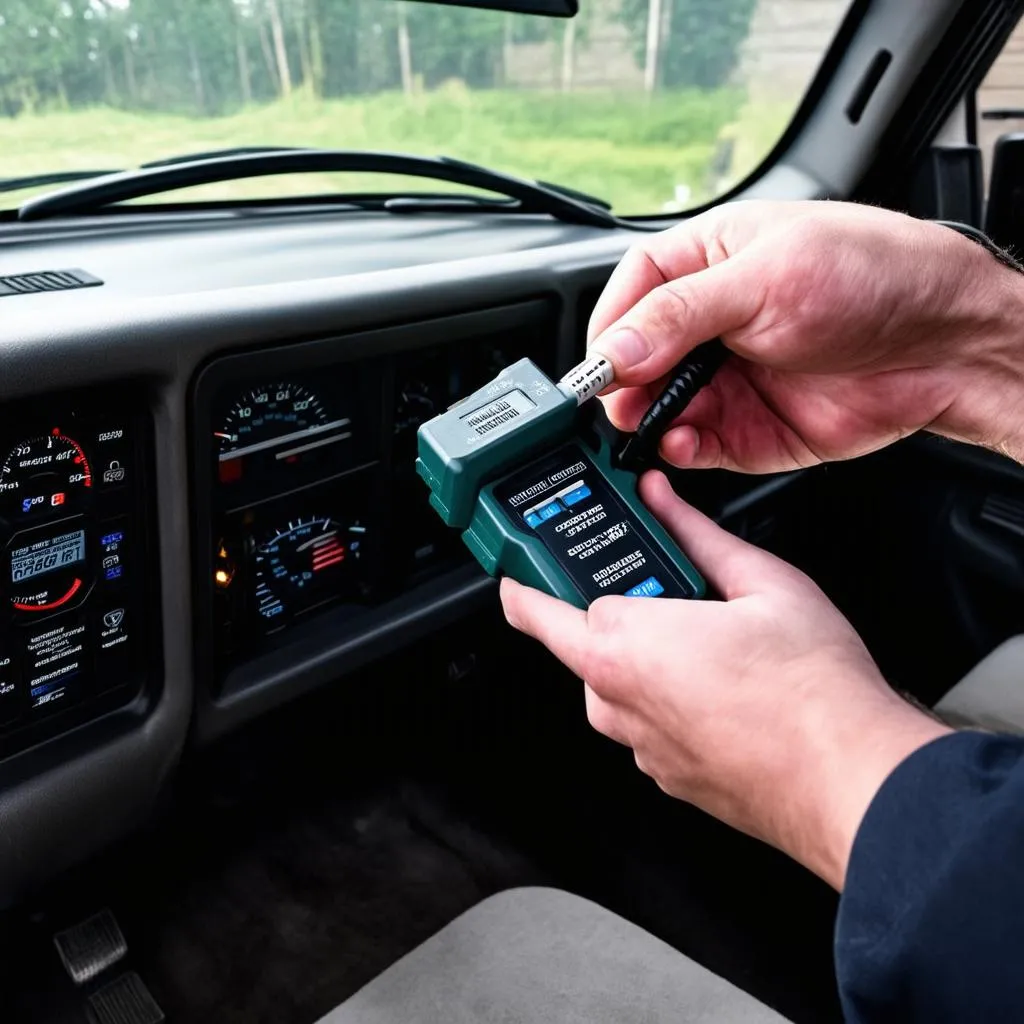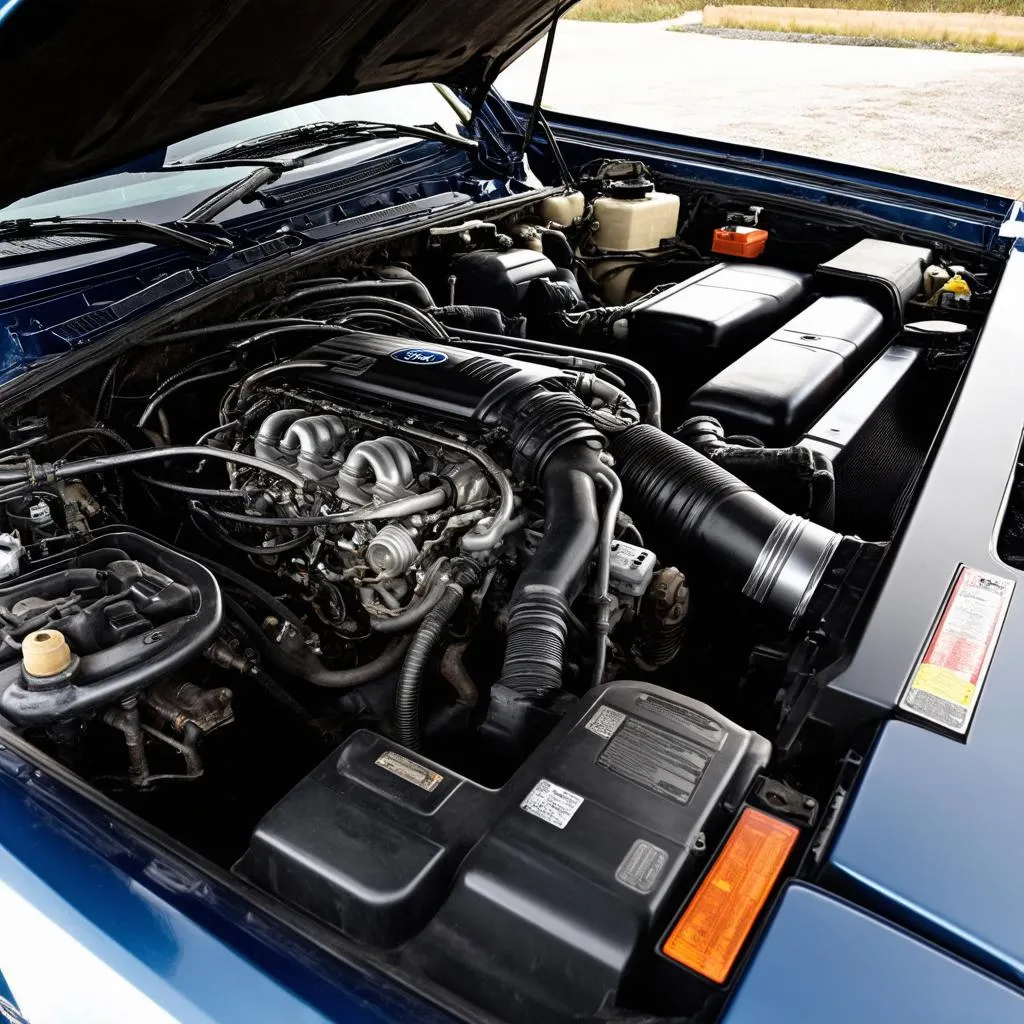Picture this: you’re cruising down Route 66 in your trusty 1997 Ford F250, wind in your hair, classic rock on the radio. Suddenly, the “Check Engine” light illuminates the dashboard, casting a shadow over your road trip. Before you hit the panic button, remember this: your truck speaks to you, but in a language only an OBD code reader can understand.
What’s the Deal with a 1997 Ford F250 Obd Code Reader?
Let’s break it down. OBD stands for On-Board Diagnostics, essentially the brain of your truck’s engine management system. When that “Check Engine” light pops up, it’s a distress signal from your F250’s OBD system. An OBD code reader acts as a translator, deciphering those cryptic codes into plain English (or whichever language you prefer).
Think of it this way: You wouldn’t diagnose a medical condition based solely on a cough, would you? You’d head to a doctor who’d use specialized tools for a diagnosis. Similarly, an OBD code reader is your mechanic-in-a-box, providing the insights needed to pinpoint the issue.
Decoding the Mystery: Why You Need an OBD Code Reader for your 1997 Ford F250
For many 1997 model year vehicles, gone are the days of popping the hood and relying solely on a mechanic’s intuition. Your F250, while built Ford tough, benefits greatly from this technology.
Here’s why a 1997 Ford F250 Obd Code Reader is indispensable:
- Early Detection & Prevention: A code reader can catch minor issues before they snowball into major (and expensive) repairs. Think of it as preventative maintenance for your truck.
- Empowerment Through Information: Knowledge is power. Understanding the codes empowers you to make informed decisions about repairs, whether you choose to DIY or consult a mechanic.
- Time and Money Saver: No more endless trips to the mechanic for a diagnosis! An OBD code reader can potentially save you hundreds of dollars in diagnostic fees alone.
- Peace of Mind: Knowing you have a tool to quickly diagnose any engine hiccups provides invaluable peace of mind, especially on those long hauls.
Common 1997 Ford F250 OBD Codes & What They Mean:
While a code reader will give you the specific code, here are some commonly encountered ones for a 1997 F250 and their potential implications:
- P0171 & P0174 (System Too Lean): This often points to a vacuum leak, a faulty oxygen sensor, or issues with the fuel delivery system.
- P0300 (Random Misfire): Spark plugs, ignition coils, or fuel injector problems are usual suspects.
- P0401 (EGR Insufficient Flow): A clogged EGR valve or a faulty EGR sensor might be the culprit.
Choosing the Right OBD Code Reader:
Not all OBD code readers are created equal. For your 1997 Ford F250, you’ll want a reader that supports the OBD-II protocol, the standard for this model year.
Expert Tip: Renowned automotive electronics specialist, Dr. Emily Carter, author of “Automotive Electronics Demystified,” suggests opting for a code reader that not only reads but also clears codes. This feature is invaluable for resetting the “Check Engine” light after addressing the issue.
Still Puzzled? We’re Here to Help!
Have more questions about your 1997 Ford F250 OBD code reader or need help navigating the world of automotive diagnostics? Don’t hesitate to reach out! We offer expert advice and support to get you back on the road with confidence.
Contact our team on Whatsapp at +84767531508 for 24/7 assistance. We’re passionate about helping you keep your Ford F250 running smoothly!
Looking for More Ford F250 Diagnostic Tips?
Check out these other helpful articles on our website:
Don’t let a “Check Engine” light dampen your adventures. Equip yourself with the knowledge and tools to keep your 1997 Ford F250 running strong for years to come!
 OBD reader plugged into a 1997 Ford F250
OBD reader plugged into a 1997 Ford F250
 Engine bay of a 1997 Ford F250
Engine bay of a 1997 Ford F250